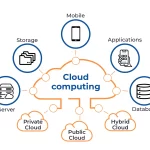The Impact of Big Data on Decision Making
Uncovering Patterns and Trends: One of the key advantages of Big Data is its ability to unveil patterns and trends that were previously hidden. By analyzing massive volumes of structured and unstructured data, businesses can identify correlations, anomalies, and predictive patterns. These insights enable decision-makers to understand customer behavior, market trends, and industry shifts with greater accuracy, facilitating proactive decision making.
Enhanced Precision and Accuracy: Traditional decision-making processes often rely on limited data samples, leading to potential inaccuracies and biases. Big Data offers a solution by providing a more comprehensive and diverse range of data points for analysis. Decision-makers can leverage this wealth of information to make more precise and accurate judgments. The inclusion of various data sources minimizes biases and enriches the decision-making process, leading to better outcomes. Real-time
Decision Making: Big Data analytics empower organizations to make decisions in real time or near real time. Traditional approaches often involved analyzing historical data, which could be time-consuming and outdated by the time decisions were made. With Big Data, businesses can monitor and analyze data streams in real time, enabling prompt responses to changing market conditions and customer preferences.
Real-time decision making gives organizations a competitive edge by allowing them to capitalize on opportunities swiftly and mitigate risks effectively. Improved Risk Management: Big Data analytics play a vital role in risk management by providing insights into potential risks and vulnerabilities. By analyzing data from various sources, organizations can identify early warning signals and detect emerging threats. This proactive approach enables decision-makers to implement preventive measures and minimize potential damages.
Moreover, Big Data analytics can help predict and simulate scenarios to assess the impact of different decisions on risk profiles, allowing for informed risk mitigation strategies. Personalization and Customer Insights: In the era of customer-centricity, understanding individual preferences and needs is crucial for businesses. Big Data enables organizations to gather vast amounts of customer data, including demographics, behaviors, and preferences.
By leveraging this information, businesses can personalize their products, services, and marketing efforts, enhancing customer experiences and loyalty. Decision-makers can rely on data-driven insights to identify customer segments, tailor offerings, and anticipate evolving customer demands. Innovation and Product Development: Big Data acts as a catalyst for innovation and product development. By analyzing customer feedback, social media interactions, and market trends, organizations can identify gaps in the market and develop innovative solutions.
Big Data analytics provide valuable insights into customer preferences, enabling organizations to create products and services that align with evolving consumer needs and preferences. Informed decision making, supported by Big Data, leads to more successful innovation and competitive advantage. Conclusion: The impact of Big Data on decision making cannot be overstated. With its ability to uncover patterns, enhance precision, enable real-time decision making, and drive personalized experiences, Big Data has revolutionized the way organizations operate.
By embracing Big Data analytics, businesses can make better-informed decisions, gain a competitive edge, and navigate complex market dynamics with confidence. As the digital landscape continues to evolve, harnessing the power of Big Data will become increasingly critical for organizations seeking to thrive in the data-driven era.


































